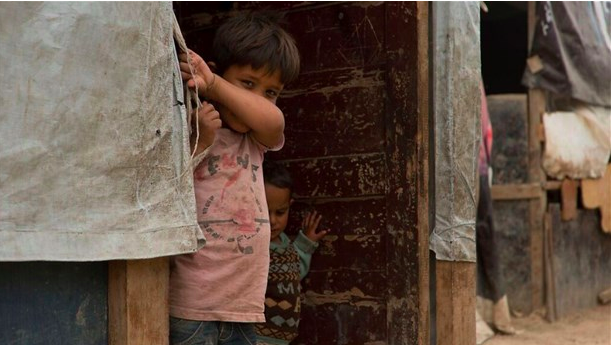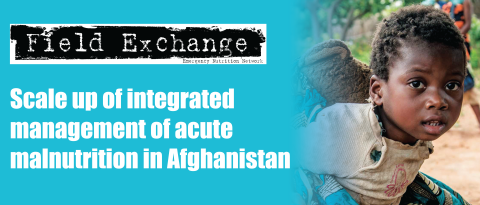Impact evaluation of the Lebanon multipurpose cash assistance programme
Summary of evaluation1
Location: Lebanon
What we know: Cash assistance is increasingly used in humanitarian response to complement in-kind assistance.
What this article adds: Multipurpose cash assistance (MCA) was used in Lebanon to support 20,000 refugee households in 2015, facilitated by the Lebanon Cash Consortium (LCC). This study evaluated the impact of MCA at a six-month midline on measures of food security, health, hygiene and housing by comparing households that received cash versus similar households that did not. Findings showed that total monthly expenditures were on average 21 per cent higher in beneficiary compared to non-beneficiary households (32 per cent higher on foods). LCC beneficiaries resorted less frequently to borrowing food or sending household members to eat elsewhere to meet consumption needs and were less reliant on debt for paying rent. Overall, LCC beneficiaries were found to be four times happier than non-beneficiaries, felt eight times more secure and had five times the sense of trust in the host community. Beneficiaries were, however, under greater stress over financial issues (possibly due to a sense of precariousness and dependency on cash aid). The authors conclude that, in the absence of more durable alternatives for displaced Syrians, the LCC MCA continues to be a necessary and appropriate aid modality to help refugees meet their basic needs according to their household’s priorities.
Introduction
Over one million Syrians now live in Lebanon as refugees due to the crisis in Syria. Multipurpose cash assistance (MCA) has been used extensively in the Lebanese context to meet refugees’ basic needs, ranging from food, shelter, health and hygiene, and other items according to their spending priorities. The Lebanon Cash Consortium (LCC) brings together six international non-governmental organisations (NGOs), including Save the Children (consortium lead), the International Rescue Committee (monitoring, evaluation and research lead), Solidarités International, CARE, ACTED, and World Vision International. The mandate of the consortium is to provide MCA to economically vulnerable Syrian households, whose eligibility is determined based on the inter-agency proxy means test (PMT) score that seeks to measure economic vulnerability. During 2015, 20,000 households had been assisted with MCA out of 25,000 that were found eligible. The remaining 5,000 were not enrolled in the MCA programme, reportedly due to lack of funding. This study aimed to measure the impact of the MCA delivered by LCC at a six-month midline of assistance on several proxies of physical and material wellbeing, encompassing food security, health, hygiene and housing.
 Methodology
Methodology
The study used a quasi-experimental design – regression discontinuity design (RDD) – to compare indicators of the physical and material wellbeing of households that received cash assistance versus households who did not. The RDD can establish the causal effect of an intervention without having to randomise those who will receive cash assistance or not, which is considered unethical in humanitarian programmes. In this RDD study, the intervention and control households were chosen in proximity of the PMT cut-off point. Hence, they are supposedly similar from a socio-economic and demographic perspective, as if randomly chosen; the only assumed difference is in the receipt of cash assistance. The study compared a group of 247 recipient and 261 non-recipient households. Most households (76 per cent recipient and 77 per cent non-recipient) were male-headed, with an average age of 39 years old. Households in the two groups were very similar, except that non-recipient households possessed a greater variety of basic household assets, were smaller in size and received a lower amount of cash assistance from sources other than the LCC.
Findings
Overall, findings show that LCC cash aid increases refugees’ consumption of living essentials, including food and gas for cooking. Their total monthly expenditures, which includes food, water, health, hygiene and other consumables, are on average 21 per cent higher than those of non-beneficiaries. In particular, LCC beneficiaries spend around 32 per cent more on food and 12 per cent more on gas for cooking compared to non-beneficiary households. Regarding food, LCC beneficiaries have a higher intake of dairy products and lower engagement in several coping strategies related to a previous lack of money to buy food. They resort less frequently to borrowing food and to sending household members to eat elsewhere to meet food needs.
LCC beneficiaries are also better off because they are less reliant on debt for paying their rent. Non-beneficiary households are 1.8 times more likely than beneficiary households to borrow money to rent the place where they live.
LCC cash transfers make households’ economies ‘healthier’; in fact, recipients are more likely to count on work as their main source of income, as opposed to negative and unsustainable coping strategies, such as debt, remittances, gifts and sale of assets or food.
Overall, LCC beneficiaries were found to be four times happier than non-beneficiaries due to being able to meet their household’s basic needs. However, they are also under greater stress due to financial issues, which may be a consequence of the sense of precariousness and dependency on cash aid and awareness that assistance may be discontinued. From a social cohesion perspective, LCC beneficiaries feel eight times more secure compared to non-beneficiaries. In addition, LCC cash assistance appears to increase their sense of trust in the community hosting them fivefold.
The central question of this study was: did the LCC MCA programme help recipients in achieving higher levels of physical and material wellbeing? The study findings show multiple positive outcomes of the programme, which is consistent with other randomised control trial and RDD studies on MCA; this supports the generalisation of these findings. On the other hand, the size of the effect cannot be generalised beyond this PMT bandwidth, or for other amounts of MCA.
The authors cite two major methodological limitations of this study. Information collected at baseline and midline was self-reported, hence of limited accuracy and reliability. In addition, the two groups were not entirely similar, which violates a core RDD assumption; although the analysis addressed this issue, some degree of bias should be expected.
The authors conclude that, in the absence of more durable alternatives for Syrians in displacement (such as access to income-generation opportunities) and despite the variety in assistance, the LCC MCA continues to be a necessary and appropriate aid modality for helping refugees in meeting their basic needs, in accordance with households’ priorities. In fact, MCA is particularly effective in addressing access barriers in situations where markets are functioning and products are more ‘elastic’ to demand increase, such as food items. In markets characterised by availability issues, MCA alone is not effective. Specific interventions are needed which are aimed at strengthening services and expanding delivery capacity and outreach in order not to create disparities in the status of affected peoples.
Endnotes
1Lebanon Cash Consortium (LCC) Impact Evaluation of the Multipurpose Cash Assistance Programme, January 26, 2016.


